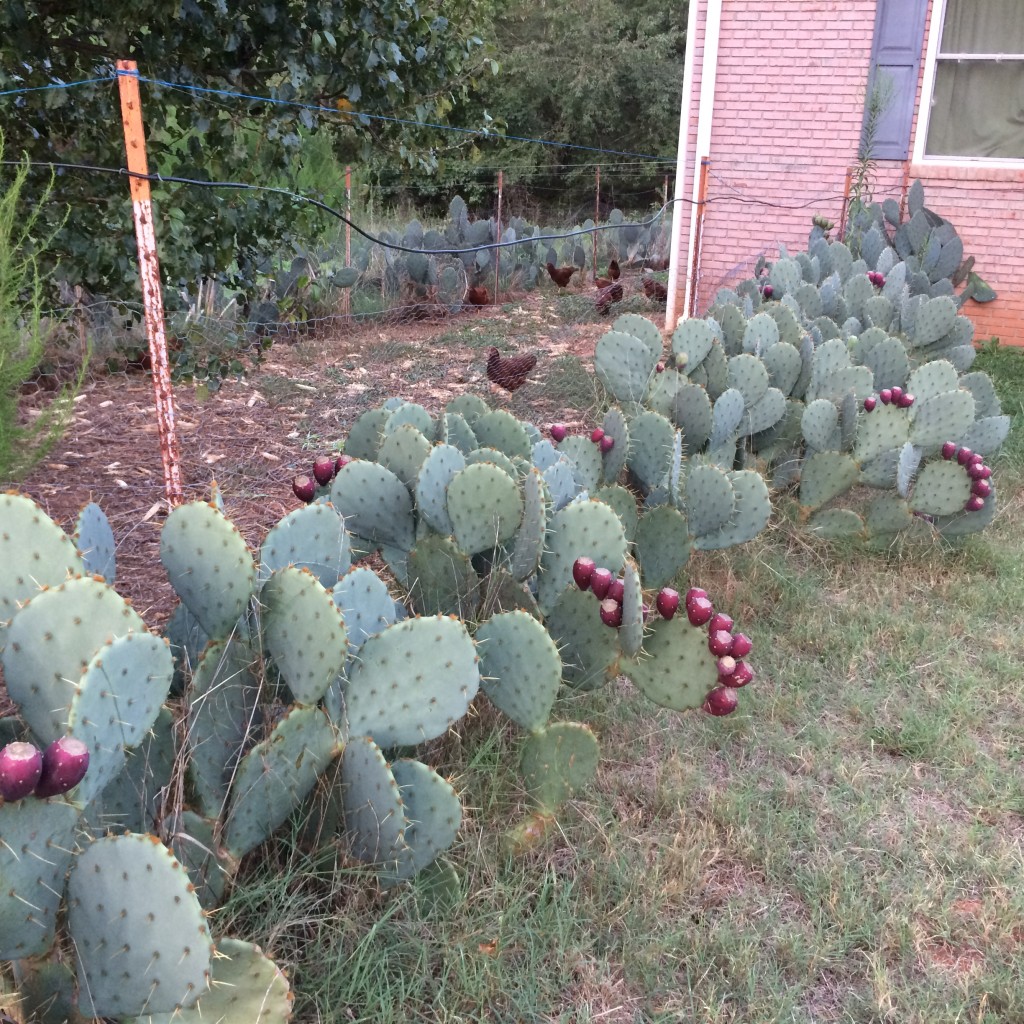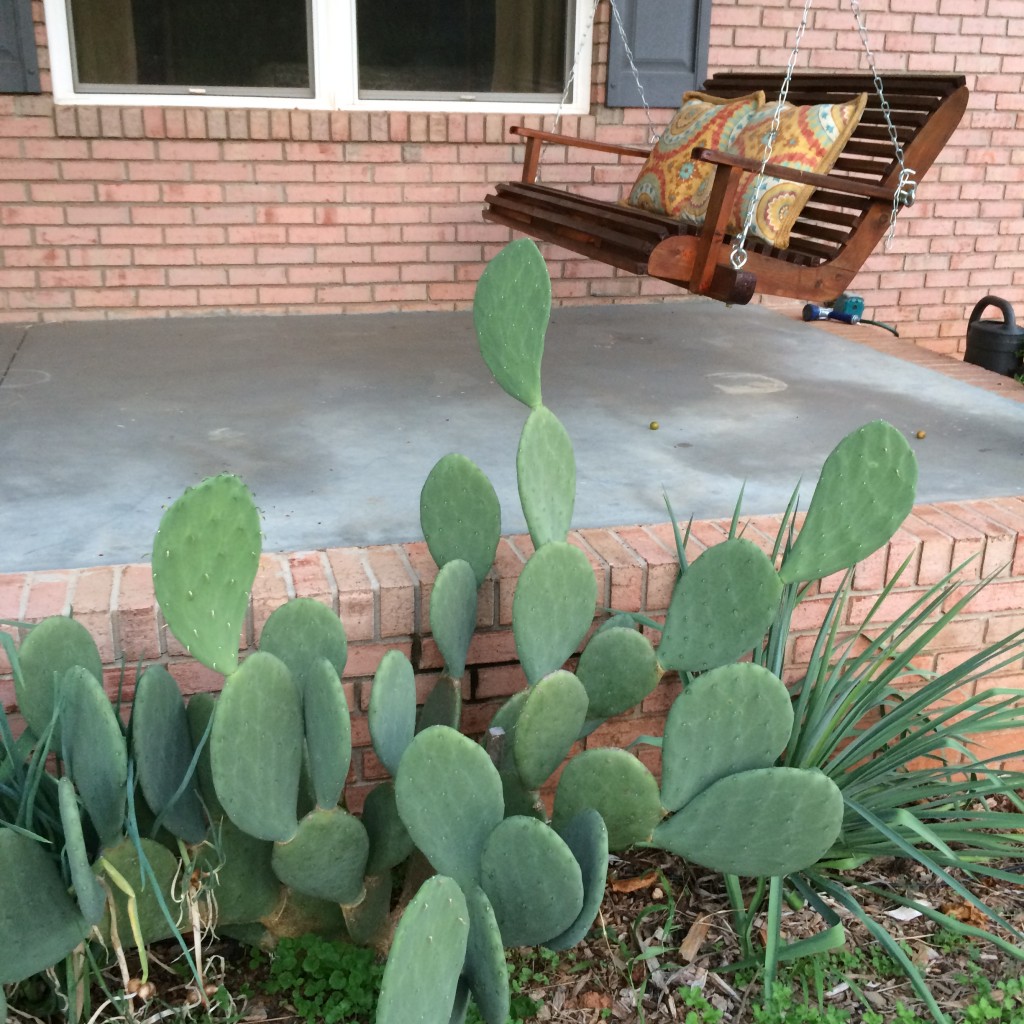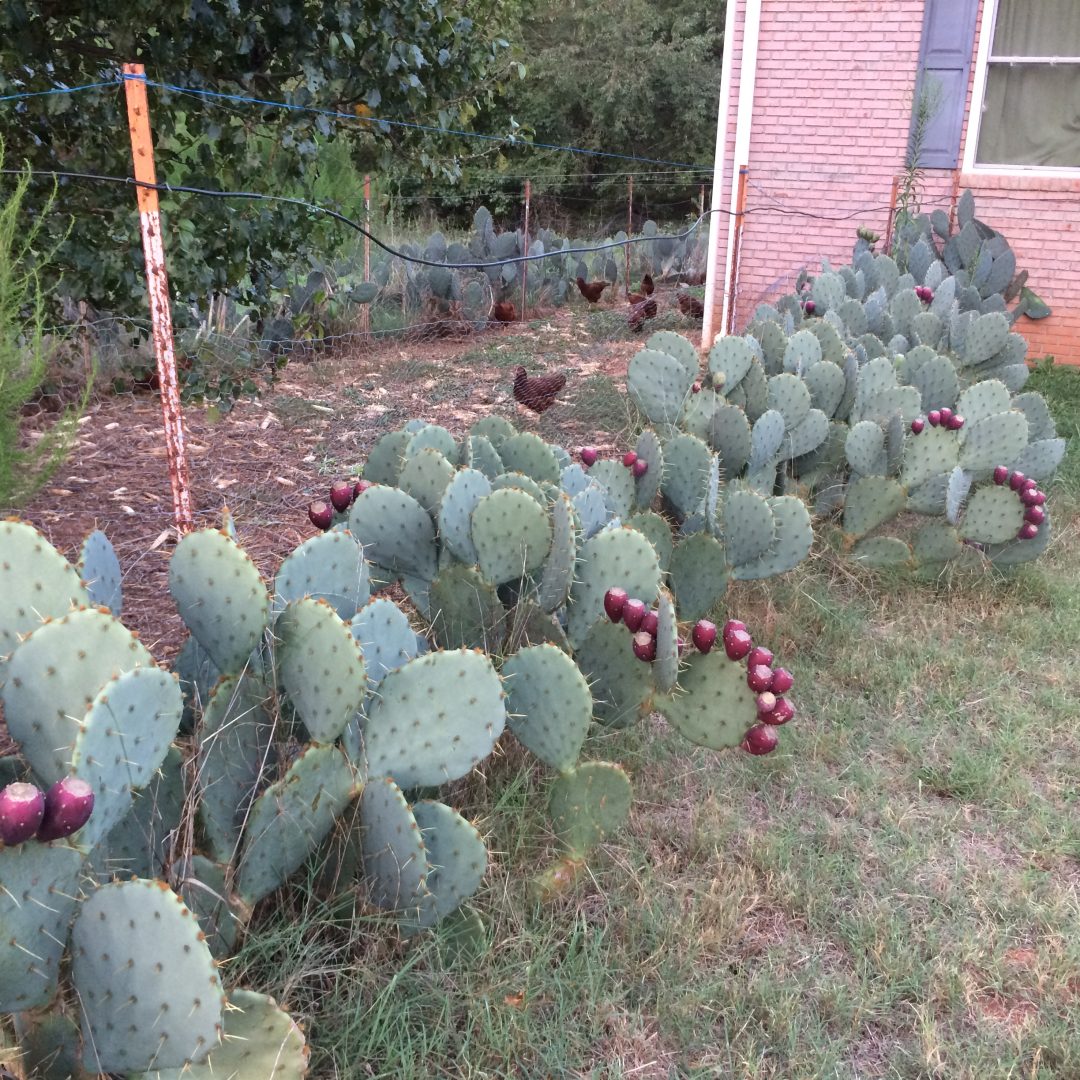By Shawn Jadrnicek, the author of The Bio-Integrated Farm: A Revolutionary Permaculture-Based System Using Greenhouses, Ponds, Compost Piles, Aquaponics, Chickens, and More and a speaker at the 2016 Sustainable Agriculture Conference, Nov. 4-6, in Durham, NC.

Does the prickly pear cactus have a place at your farm? If this hot, dry weather continues, it may be your next big thing.
I first fell in love with the prickly pear cactus at the Sustainable Agriculture Conference in Durham in 2008. Oddly enough, it wasn’t at a conference workshop – but outside in the parking lot. I noticed a dark magenta fruit hanging over the side of a parking garage planter high above the ground. The fruit called to me and I made the arduous trek up the stairs to investigate the sighting.
I carefully pulled back the skin for my first taste of the sweet pulp, a flavor reminiscent of watermelons and strawberries. Unfortunately, the fruits were covered with small barbed hairs, glochids, that protect the fruits like the spines of a porcupine. I ended up paying ten-fold for the experience later that night as I plucked the hairs from my hands, armed with tweezers and a magnifying glass.
Little did I know that my first encounter with prickly pear would lead to a long-term love affair culminating in hundreds of plants at my house.
Prickly pear has many uses: fruit, vegetable, fence, dye, medicine and flowers that offer a plethora of pollen for bees. Prickly pears belong to the genus Opuntia, a group of cacti indigenous to the Americas with species found as far north as Canada and as far south as Mexico. Opuntia is now grown worldwide, integrating smoothly into some cultures while becoming an invasive menace in others.
For the past several years, hot and dry have been the norm in my corner of the Upstate of South Carolina. Last year we had 40 days without rain and this year we endured several months with barely a sprinkle to wash the dust off the plants. The parched landscape entered into what the U.S. Drought Monitor program deemed a severe drought. While I spent hundreds of dollars on water, barely keeping my fruit trees alive, the un-irrigated Opuntia’s pushed forward with new leaves and fruit, unscathed by nature’s wrath. If the past several years are any indication of where our changing climate is heading, prickly pears appear to have a bright future.
The South Carolina Botanical Garden’s (SCBG) director Patrick McMillan understands the beauty, function and role prickly pears play in the southeastern landscape. Below the Bob Campbell Geology Museum at the botanical garden lies the largest prickly pear collection in the world. Hundreds of different plants dot the hot, south-facing hillside adjacent to Yuccas, Mesquites and other desert plants. Thriving in the most inhospitable microclimate, the plants have turned the hillside into a green oasis of life after only a few years’ growth.
McMillan’s expeditions around the globe have produced a wealth of new plant material for the garden. The SCBG also hosts the largest collection of Chihuahuan desert plants in the world. Unlike most deserts, the Chihuahuan desert has a highly variable climate with some wet years and some dry, a climate direction we may be heading toward.
I’ve decided to hedge my bets with the climate and add opuntias to my landscape palette. The two varieties I grow are O. engelmannii var. lindheimeri and O. ellisiana. The lindheimeri grows quickly to five feet tall and five feet wide. Native from Texas west to California and south to the Chihuahuan desert, the lindheimeri cactus is a friend to dry, hot places. The stout spines turn the plant into an impenetrable hedge, perfect for controlling livestock. I use prickly pear as a border around our entire property and to forge an alley for our flock of hens, connecting them to pasture. The fruit of the lindheimeri is superb. A dark magenta in color, it ripens to sweetness in October. During mild winters the fruit will stay on the plant until spring, patiently awaiting its harvest.
Without the help of friends showing me how to unlock the secrets of eating the fruit, the hairy glochids or seeds would have dissuaded me. But fortunately I learned the proper protocol. First, arm yourself with a good pair of tongs to pluck the fruits from the plant, placing them carefully into a paper bag. Traditionally, the hairy glochids on fruits were burned or rolled in sand for removal. While I have fond memories of burning prickly pear fruits over a campfire, I’m usually too busy to make this practical. Simply boiling the fruits for three minutes will do the trick. Finally, I rinse the fruit and place it into one-gallon Ziploc bags, storing it in the freezer.
Although it’s possible to consume the fruit unprocessed, the multitude of hard seeds make the experience unpleasant. So I use the fruits in smoothies. The blades of the blender grind the seeds into a palatable high-protein powder and the vivid colors of the fruit turn the smoothie into a hot pink hue.

The spineless prickly pear (Opuntia ellisiana) grows next to a porch swing providing easy access to the tasty pads.
The second variety of Opuntia I grow is ellisiana, a spineless and nearly glochid-free variety with tasty pads. I break the young pads from plants when they emerge in spring and summer. After brushing the glochids off with a scouring pad, I cut the pads into strips and add them to stir-fries. These pads are the napoles found in Latin dishes that taste like a tangy green bean.
If you come across an Opuntia plant you like, they’re easy to propagate. Simply break off a mature pad and let the scab heal by leaving the pad in a dry area for a few days. Then place the pad bottom-down a few inches into the soil, using bricks to hold it upright. Regular water and fertilizer are not necessary, but speeds growth considerably. Within a few short years, expect flowers, fruit and tangy green pads to add to your dinner plate or to a CSA basket.


